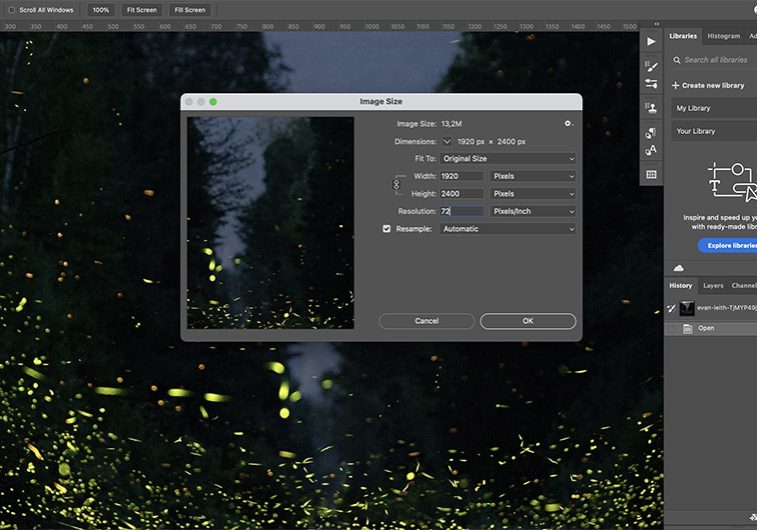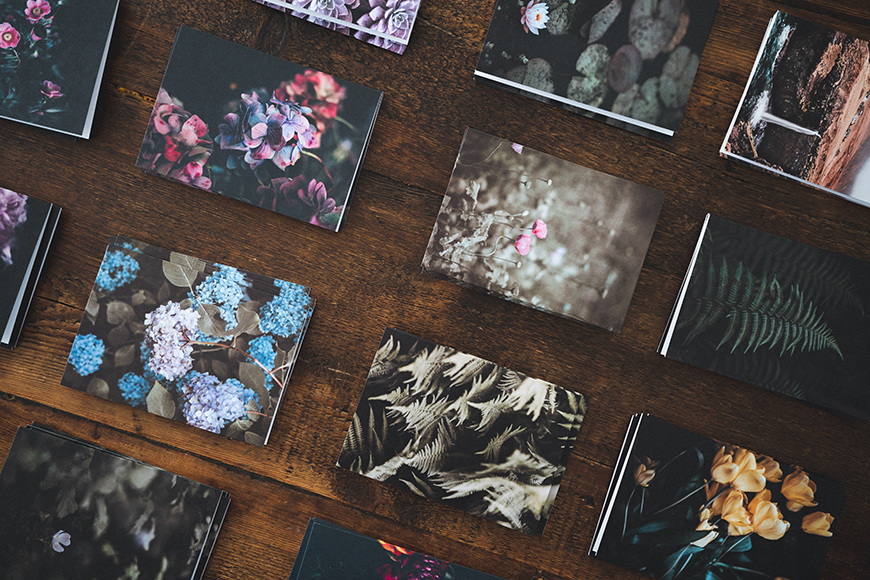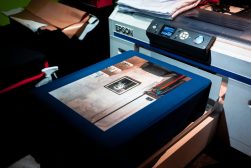
How to Choose Photo Resolution & Size for Printing Or Online Use
Photo resolution and megapixels are confusing topics, especially how to choose image resolution for print or online use. This guide will help you understand.
If you’ve ever wondered what’s a good photo resolution for printing or online use, this is the guide for you.
Despite the popularity of high-megapixel cameras and apps to increase image resolution, many photographers still don’t understand how image size affects image quality.
Having a high-resolution image for printing may be obvious, but how do you make an image high resolution in the first place?
Do you need to worry about pixel resolution in digital images used online? Is a higher resolution always necessary for bigger prints?
If you’re staring at your computer screen scratching your head, keep reading as all will be answered in this in-depth guide to image resolution.
- Related: How to print better photos at home
Table of Contents
What is Photo Resolution?

Credit: Annie Spratt
The term resolution is one of the most confusing in digital photography. Is it about image quality? Is it about file size? Does it matter if you’re only going to use your image on a computer screen?
These are some of the questions that most people have when they first approach digital photography – I know I had them. So, let’s start by clarifying that a photo’s resolution is the number of pixels it has.
You can determine how many pixels are in a photo by multiplying the pixels on the width by the number on the height. For example, if you have an image file that’s 3648 px by 2736 px, the actual number of pixels in the image is 9,980,928 – which means it has a 10MP resolution.
See also: What is Adobe Super Resolution? (and why you should use it)
How to Choose the Best Image Resolution
What is the Best Image Resolution for Print?
The printer resolution is expressed in DPI, which stands for dots per inch. The dots that it’s referring to are the dots of ink released by the printer. Digital photos use the measure PPI, which stands for pixels per inch.
The best resolution for printing photos is 300 PPI, although 250 or 150 PPI may be good enough if you don’t need such high quality. Keep in mind that a lower resolution means fewer details. Likewise, high resolution image sizes mean more detail.
Some printing services don’t ask you for a specific PPI – instead, they ask for the document size. For example, they ask for an image with at least 1024 px x 768 px to produce a 5″ x 7″ print. You can quickly determine the PPI by dividing 1024/7 and 768/5, because when you know the number of pixels and the number of inches, then you can determine how many pixels there are per inch.
(Read more about pixel art software.)
This is probably not the first time you’ve heard that 300 is the magic number for printing photos. Then, you go buy an inkjet printer, and you find that they are 600 DPI and even 1200 DPI. Well, that refers to the printer resolution. In other words, the amount of ink dots that it’s able to print – see our guide on PPI vs DPI.
Inkjet printers, as well as laser printers, can release dots of different sizes and intensities, and they can optimize the movement to overlap the dots to deliver more detail to your printed images.
So, you can print a 300 PPI photo on a 1200 DPI printer, and it won’t change the total number of pixels because the DPI only refers to the dots per inch and not the image’s resolution.
- Read more: How to change DPI in Photoshop
What is the Best Image Resolution for Web?
Images for the web should be low resolution. This is because more pixels result in a bigger file size, and bigger files load more slowly.
Since we’re accustomed to accessing information in a fraction of a second, if a page doesn’t load quickly, the person will just move on to the next one.
Also, if somebody steals your images to use without consent, they can’t do much with a low-resolution image – so it’s a type of protection.
Some websites and social media sites require a certain resolution to better display your images. Here’s a guide to the most popular web picture resolution:
- Facebook profile picture: 180 x 180 px.
- Facebook cover image: 400 x 150 px (min).
- Twitter header image: 1500 x 1500 px.
- Twitter profile picture: 400 x 400 px.
- Instagram profile picture: 110 x 110 px.
- Instagram Stories: 1080 x 1920 px.
- Instagram feed: 1080 x 1080 px / 1080 x 1350 px.
- LinkedIn profile picture: Something between 400 x 400 and 20,000 x 20,000 px (min. 200 x 200).
- LinkedIn background image: 1584 x 396 px.
- YouTube profile picture: 800 x 800 px.
- Channel cover image: 2560 x 1440 px.
- Shopify product images: 2048 x 2048 px.
- Amazon product images: 1000 x 1000 px.
- Etsy product images: 1000 x 1000 px.
(See other image sizes for social media.)
If you’re building your website from scratch and want to know which is the best resolution, you can use a page ruler and determine the size you want to display your image according to your design.
However, you can use the biggest possible web resolution to keep the image available in any format. This is because it’s always better to shrink a photo than to enlarge it.
So, you can use a width of 2560 because it’s the standard resolution of 30″ monitors. The height will depend on the photo’s aspect ratio – if it’s squared, 16:9, 4:3, etc.
The standard PPI for images on the web is 72. As long as images stay digital, more pixels won’t help you gain more detail – they only make images heavier.
There is one exception to the rule. If you’re a photographer or a digital artist, you’ll find that some portfolio websites will require the best resolution available. This is because they offer a print-on-demand feature. So, they display a low-resolution image on the website, but they need the high-resolution one to print your products once someone buys them.
What is the Best Image Resolution for Facebook?
Finding official information about image resolution on Facebook is quite tricky for personal accounts. However, Meta has published a guide for businesses with the minimum and recommended image resolutions to use on their website. (Note that they start by saying that you should use the highest quality available.)
For the Facebook feed, they recommend 1080 x 1350. For the right column, Instant Articles, and Marketplace, the recommended image resolution is 1200 x 1200. For Facebook stories, 1080 x 1920.
Facebook does sometimes change its image dimensions and compression algorithms, so these recommendations can change over time.
For your personal account, consider that your Facebook profile is displayed at 170 x 170 and the cover photo at 820 x 312 on a desktop.
What is the Best Image Resolution for Instagram?
Still from Meta’s Business Help Center, the recommendation for Instagram Stories is 1080 x 1920 and 1080 x 1080 or 1080 x 1350 for the Instagram Feed, depending on the format.
You should also check the best Lightroom export settings for Instagram.
What is the Best Image Resolution for PowerPoint?
PowerPoint presentations are meant to be displayed on monitors or projected. Considering an image that fits the entire slide in a widescreen format, you can use a digital image of 960 x 540 px.
However, if you’re going to project your PowerPoint in HD 1080D, it’s best if you use an image of 1280 x 720 px.
Relationship Between Number of Pixels & Photo Size
A photograph is usually a rectangle or square formed by smaller squares called pixels. You’ll get the image height if you count the number of pixels on the vertical side. In the same way, if you count the pixels horizontally, you’ll get the image width. If you multiply both values, you’ll have the total amount of existing pixels.
Let’s use the Canon EOS 90D as an example, which is advertised to have 32.5 megapixels. When you open a raw file taken with the 90D, you’ll see that it has 6,960 px x 4,640 px. When you multiply these two numbers, you get a total of 32,294,400 pixels – which Canon rounds up as a 32.5 MP image sensor. You can do the same exercise with any digital camera.
Now, this doesn’t tell us anything about the photo’s physical size. That depends on how you distribute the total number of pixels. If you put them very close together, the photo size will be smaller, and if you spread them out, it will be bigger. This is called pixel density, and it doesn’t change the total number of pixels.
This is expressed in a value called PPI (pixels per inch). The most common measures you’ll find are 72 PPI for digital use and 300 PPI for print. So, raw files from a Canon 90D camera can be 96.6 x 64.4 inches if you have 72 pixels per inch. 2However, they can also be 23.2 x 15.4 inches if you have 300 pixels per inch.
When you want to print that image, you have to think about the dots per inch (DPI). This is the number of dots the printer will put on each inch of paper. You need to have a high PPI and a printer with a good DPI resolution to have acceptable results.
Image Quality & Image Size FAQs
What is a high-resolution image?
High-resolution images have a higher pixel count per inch. In digital photography, the standard for a high-quality photo is 300 PPI because it will give you good print quality.
How do I know if my JPEG is high resolution?
To check the resolution of your images, you can use a photo editor program. For example, using Adobe Photoshop, you can go to Image > Image size. Here you’ll find your JPEG’s size and resolution information, and you can modify it too. You can do the same with other software such as GIMP.
How can I get a higher resolution of an image?
Keep in mind that digitally enhancing the image resolution will never give you the same quality as having the picture taken at high quality from the start. However, as AI technology improves, you get to retain more image detail. Using Lightroom, you can quadruple the image size using the feature SuperResolution. In Photoshop, you can open the image size and input the new values – then check Interpolation as the resampling method. You can also use dedicated software such as Gigapixel AI to increase the resolution up to 600%.
How do I increase the resolution of a photo on my iPhone?
Start by choosing the ‘Most Compatible’ option in the Format section of your Camera Settings. Then, turn on Apple RAW if your iPhone supports it. These options ensure the highest resolution files on iPhone. You can use third-party apps to increase the resolution of a photo you’ve already taken.
What file size should professional photos be?
The resolution for professional photos depends on the outlet of the work. If the pictures are meant for web use only, you can have images 2400 x 1600 px, and they will display properly on any device. If the aim is to have a printed image, then you need to multiply the printing size by 300 DPI – which is the industry standard. For example, to print an 8 x 10-inch photo, you need a digital file to have 2400 by 3000 px. However, large format prints require less PPI – for example, a billboard is not 300 DPI but usually around 30 DPI. You can discuss with your client from the beginning what size they’ll need. You should also read our guide on where to print large photos and posters online.
Is Higher Resolution Really Better? Final Words
As you can see, high resolutions are not always better. Actually, for web usage, a higher resolution is actually a problem.
It’s also useless to use the highest resolution available on your phone or camera if you’re only going to look at your photos on your phone or post them on social media. This will only create large files that will fill your memory card quickly, and you don’t really need the extra resolution.
However, if you know you will be printing your images, then yes – a high-resolution file is better. Do keep in mind that resolution is not the only requirement for a higher quality print, but it definitely is a must-have.
I hope this article cleared up some of the confusion about image resolution. Please share your doubts and thoughts in the comments section.














